- Clone
- FIB504 (See other available formats)
- Regulatory Status
- RUO
- Workshop
- VI 6T-101, VI A024
- Other Names
- β7 Integrin, integrin βp, ITGB7
- Isotype
- Rat IgG2a, κ
- Ave. Rating
- Submit a Review
- Product Citations
- publications
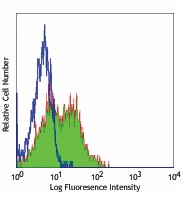
-

Human peripheral blood lymphocytes stained with purified FIB504, followed by anti-mouse IgG FITC
| Cat # | Size | Price | Quantity Check Availability | Save | ||
|---|---|---|---|---|---|---|
| 321202 | 100 µg | 92€ | ||||
Integrin β7 is a 130 kD glycoprotein also known as integin βp. It is a member of the Ig superfamily. In association with integrin α4 or αE chain, β7 forms α4/β7 or αE/β7 heterodimer. α4/β7 (CD49d/β7, LPAM-1) is expressed on the majority of peripheral lymphocytes, on small subsets of thymocytes, and bone marrow progenitors. LPAM-1 binds to several ligands, VCAM-1, MAdCAM-1 and fibronectin, and is involved in lymphocyte adhesion and some hematopoietic progenitor cells migration. αE/β7 (CD103/β7,αIEL/β7) is expressed on intestinal intraepithelial lymphocytes (IEL), dendritic epidermal T cells, T regulatory cells, a subset of CD8+ T cells in lymph nodes and lamina propria. CD103/β7 complex is thought to play a role in lymphocyte retention via interaction with its ligand E-Cadherin.
Product DetailsProduct Details
- Verified Reactivity
- Human, Mouse, Cynomolgus, Rhesus
- Reported Reactivity
- African Green, Baboon, Chimpanzee
- Antibody Type
- Monoclonal
- Host Species
- Rat
- Immunogen
- TK1 cells
- Formulation
- Phosphate-buffered solution, pH 7.2, containing 0.09% sodium azide.
- Preparation
- The antibody was purified by affinity chromatography.
- Concentration
- 0.5 mg/ml
- Storage & Handling
- The antibody solution should be stored undiluted between 2°C and 8°C.
- Application
-
FC - Quality tested
- Recommended Usage
-
Each lot of this antibody is quality control tested by immunofluorescent staining with flow cytometric analysis. For flow cytometric staining, the suggested use of this reagent is ≤0.5 µg per million cells in 100 µl volume. It is recommended that the reagent be titrated for optimal performance for each application.
- Application Notes
-
The FIB504 antibody has been reported to react with mouse and human ß7 integrin and to block ß7 integrin-mediated cell adhesion in in vitro and in vivo studies. Additional reported applications (for the relevant formats) include: blocking of cell adhesion1,3,4. The Ultra-LEAF™ purified FIB504 antibody (Endotoxin < 0.01 EU/µg, Azide-Free, 0.2 µm filtered) is recommended for functional assays (Cat. No. 321233-321238).
-
Application References
(PubMed link indicates BioLegend citation) -
- Andrew DP, et al. 1994. J. Immunol. 153:3847. (Block)
- Berlin C, et al. 1993. Cell 74:185.
- Rott LS, et al. 1996. J. Immunol. 156:3727. (Block)
- Rivera-Nieves J, et al. 2005. J. Immunol. 174:2343. (Block)
- Ohmori K, et al. 2009. J. Immunol. 182:2835. PubMed
- Yoshino N, et al. 2000. Exp. Anim. (Tokyo) 49:97. (FC)
- Product Citations
-
- RRID
-
AB_571975 (BioLegend Cat. No. 321202)
Antigen Details
- Structure
- Integrin family, Ig superfamily, 130 kD, heterodimer with CD49d or CD103
- Distribution
-
CD49d/β7: majority of lymphocytes, thymocyte subset, and some bone marrow progenitors; CD103/β7: intestinal intraepithelial lymphocytes (IEL), dendritic epidermal T cells, subset of CD8 T cells in lymph nodes
- Function
- Lymphocyte adhesion, hematopoietic progenitor cells migration
- Ligand/Receptor
- CD49d/β7: VCAM-1 (CD106), MAdCAM-1 and fibronectin; CD103/β7: E-cadherin
- Cell Type
- Dendritic cells, Hematopoietic stem and progenitors, Lymphocytes, T cells, Thymocytes, Tregs
- Biology Area
- Cell Biology, Immunology, Neuroscience, Synaptic Biology
- Molecular Family
- Adhesion Molecules, CD Molecules
- Antigen References
-
1. Andrew DP, et al. 1994. J. Immunol. 153:3847.
2. Picarella D, et al. 1997. J. Immunol. 158:2099.
3. Lefrancois L, et al. 1994. Eur. J. Immunol. 24:635
4. Cepek KL, et al. 1994. Nautre 372:190. - Gene ID
- 16421 View all products for this Gene ID 3695 View all products for this Gene ID
- UniProt
- View information about Integrin beta7 on UniProt.org
Related Pages & Pathways
Pages
Related FAQs
Other Formats
View All Integrin β7 Reagents Request Custom ConjugationCustomers Also Purchased
Compare Data Across All Formats
This data display is provided for general comparisons between formats.
Your actual data may vary due to variations in samples, target cells, instruments and their settings, staining conditions, and other factors.
If you need assistance with selecting the best format contact our expert technical support team.
-
PerCP/Cyanine5.5 anti-human/mouse Integrin β7
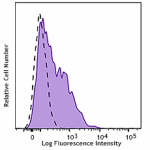
Human peripheral lymphocytes were stained with Integrin ß7 (... -
Purified anti-human/mouse Integrin β7
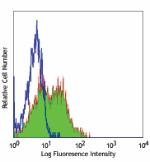
Human peripheral blood lymphocytes stained with purified FIB... -
PE anti-human/mouse Integrin β7
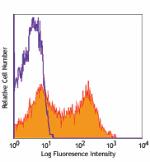
Human peripheral blood lymphocytes stained with FIB504 PE 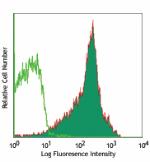
C57BL/6 mouse splenocytes stained with FIB504 PE -
APC anti-human/mouse Integrin β7
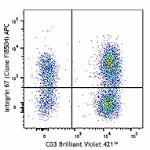
Human peripheral blood lymphocytes were stained with CD3 Bri... 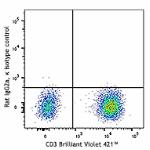
-
Biotin anti-human/mouse Integrin β7

C57BL/6 mouse splenocytes stained with biotinylated FIB504, ... -
FITC anti-human/mouse Integrin β7
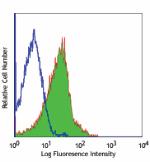
C57BL/6 mouse splenocytes stained with FIB504 FITC -
APC/Fire™ 750 anti-human/mouse Integrin β7
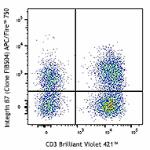
Human peripheral blood lymphocytes were stained with CD3 Bri... 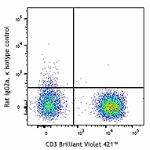
-
Alexa Fluor® 647 anti-human/mouse Integrin β7

Human peripheral blood lymphocytes were stained with CD3 Bri... 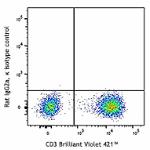
-
PE/Dazzle™ 594 anti-human/mouse Integrin β7
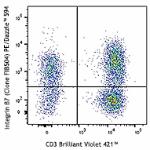
Human peripheral blood lymphocytes were stained with CD3 Bri... 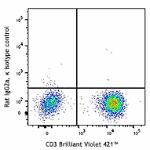
-
TotalSeq™-A0214 anti-human/mouse integrin β7
-
Totalseq™-C0214 anti-human/mouse integrin β7
-
TotalSeq™-B0214 anti-human/mouse integrin β7
-
Ultra-LEAF™ Purified anti-human/mouse integrin β7
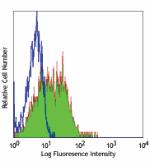
Human peripheral blood lymphocytes stained with Ultra-LEAF™ ... -
Brilliant Violet 711™ anti-human/mouse integrin β7

Human peripheral blood lymphocytes were stained with CD3 PE ... -
PE/Cyanine7 anti-human/mouse integrin β7 Antibody

Human peripheral blood lymphocytes were stained with CD3 FIT... -
Brilliant Violet 785™ anti-human/mouse integrin β7

Human peripheral blood lymphocytes were stained with anti-hu... -
Brilliant Violet 421™ anti-human/mouse integrin β7

Human peripheral blood lymphocytes were stained with anti-hu... -
Brilliant Violet 605™ anti-human/mouse integrin β7

Human peripheral blood lymphocytes were stained with anti-hu... -
Brilliant Violet 650™ anti-human/mouse Integrin β7 Antibody

Human peripheral blood lymphocytes were stained with anti-hu...
 Login / Register
Login / Register 





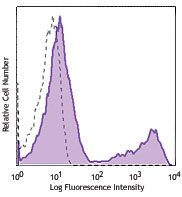






Follow Us